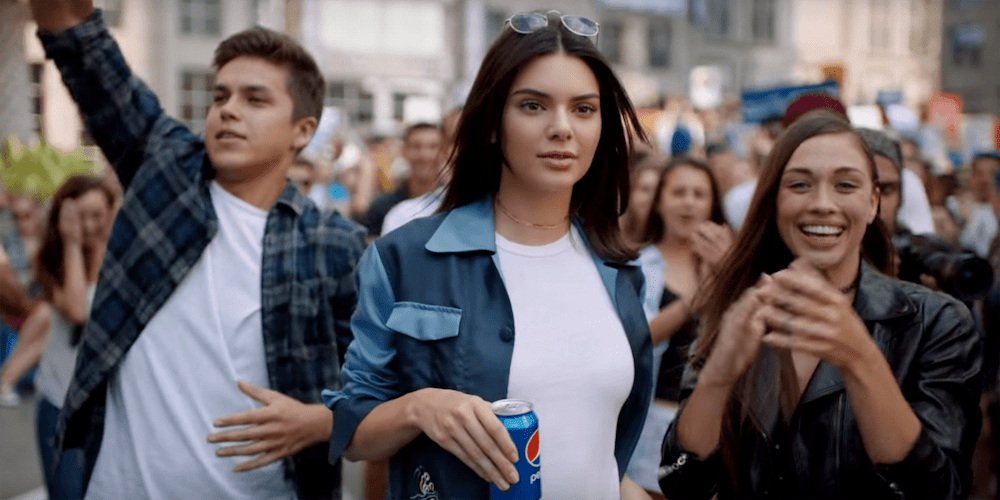Bad ads are going to happen. Advertising is hard. Sticking out in a sea of sameness is hard.
And sometimes, desperately fighting for customer recognition and attention in the age of ads everywhere—on your computer, on your TV screen, in the mail, and even on the street—can have otherwise qualified advertisers turning to senseless and hurtful marketing techniques.
Let’s talk about these bad ads and marketing failures. How much did they collaborate on these ads to alter and fix images or text? Did any internal discussions occur that could have caught some of these insensitive and bad ads?
We’ll cringe, yes—but we’ll also hopefully learn a few things about how not to get attention with advertising.
Top Bad Ads and Marketing Failures
1. Pepsi Trivializes Social Justice Movements
Here’s What Happened
This one’s still fresh. At the beginning of April 2017, Pepsi debuted an ad depicting Kendall Jenner in the middle of a photoshoot when she spots a protest happening in the middle of the street. Beckoned by a nod from a passing protestor, she whips off her wig to join in.
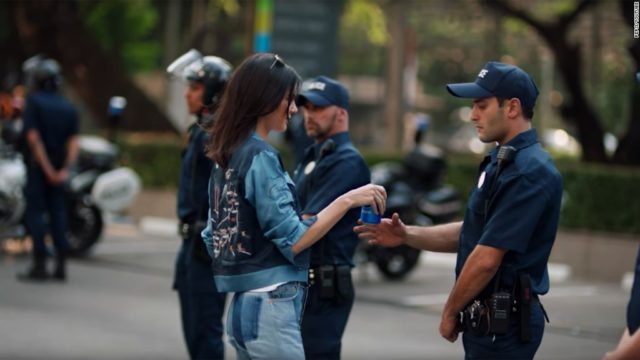
Things don’t get really bad, though, until she walks up to a police officer manning the protest crowd and hands him a Pepsi, therefore stopping protests—and socioeconomic conflict, racial tension, gender inequality, and really just, like all bad vibes—forever.
Why It Missed the Mark
Pepsi mistook social justice movements for opportunities to sell soda, which is pretty disrespectful to the people who have suffered and sacrificed for the sake of protest and change.
What’s worse? At the center of Pepsi’s apology weren’t BLM supporters or Women’s Marchers as expected, but Kendall Jenner herself.
Takeaway
Wanting to lend a helping hand for social change is good. Using serious social issues to sell a product is insensitive and insulting.
2. Bloomingdale’s Is…Okay with Date Rape?
Here’s What Happened
Bloomingdale’s wished their catalog readers a cheery holiday with this creepy ad copy:
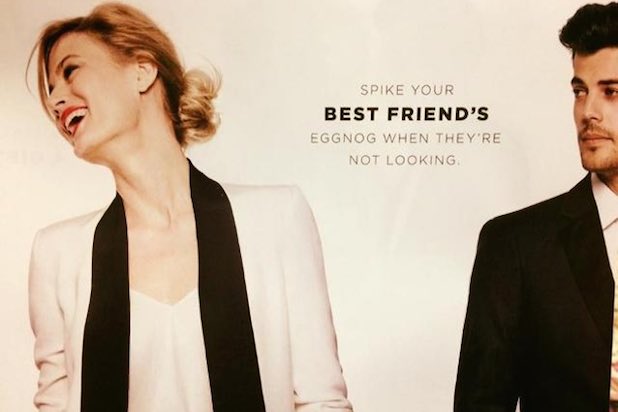
The internet was outraged, most social media users finding it unbelievable that the ad was even real and actually approved by Bloomingdale’s higher-ups.
Why It Missed the Mark
In an attempt to stand out, Bloomingdale’s lapse in judgment resulted in an ad that possibly was supposed to be quirky or funny, but ended up being creepy and outrageously offensive.
For women? It’s frightening. For men? It’s embarrassing. And for victims of date rape? Absolutely horrifying.
Takeaway
“What are the implications of what we’re saying? Are those implications good or bad?” That’s what you have to ask yourself with every piece of ad copy you approve or write.
3. Bud Light Says No Doesn’t Mean No
Here’s What Happened
In 2015 Bud Light debuted a new tagline to go with their Up For Whatever campaign:
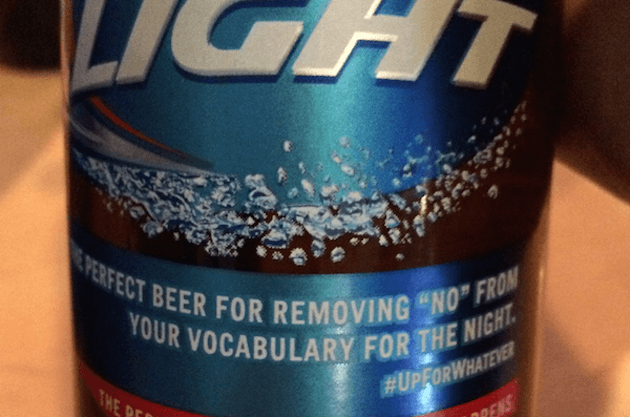
One might call it an honest mistake since at first glance it seems like it does fit in really well with the whole “Up For Whatever” personality the brand is going for. But then we remember that the phrase “No Means No” is a thing—and that combining alcohol and the implication that no….doesn’t mean no? in an ad is a bad idea.
Why It Missed the Mark
USA Today said it perfectly: “[the ad evoked] concerns about alcohol-fueled rape culture.”
Takeaway
Again: “What are the implications of what I’m saying?” You and your marketing team must ask this at every turn. To not do so is irresponsible marketing.
4. Airbnb Gets Passive Aggressive About Taxes
Here’s What Happened
In 2015 Airbnb was angry about a hotel tax policy that meant Airbnb hosts and guests had to pay a lot of money in taxes. Not classifying themselves as a hotel service, the company was understandably angry.
Then, in the most passive-aggressive advertising campaign ever, Airbnb put up ads all around San Francisco suggesting what the city should do with all that Airbnb tax money.
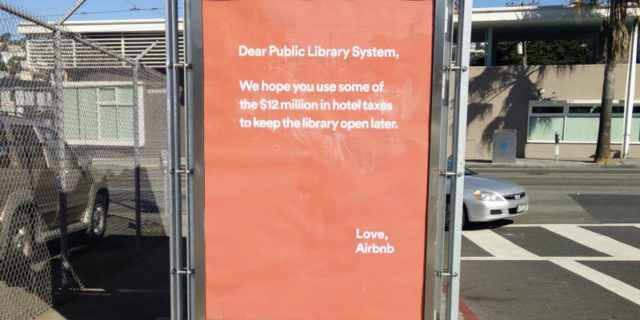
Why It Missed the Mark
Whether or not you agree it’s unfair that Airbnb has to pay the hotel tax, the bottom line is that the ads made Airbnb look like a bunch of jerks. Actually, that’s what CEO Brian Chesky said about the ads: “It made us look like jerks.”
Takeaway
Be careful about the emotions you’re evoking in your audience. If an ad might make its reader feel like she just got caught in a middle school-style catfight between you and the local government, it’s probably best to scrap it.
5. Burger King Botches Their Own Version of “Where’s Waldo.”
Here’s What Happened
Let’s throw it all the way back to 1985. This one’s just one big giant mess, so let’s break it down:
- Burger King kicks off a campaign called “Where’s Herb?” by telling customers that if they can find Herb at a Burger King location (a random and disappointingly ordinary guy not very worthy of being the centerpiece of an ad campaign), they’ll win $5,000
- Finally, a 15-year-old spotted Herb but was rejected the cash price
- Then Burger King gave the cash prize to his 16-year-old friend instead because the actual Herb discoverer was younger than the not-so-well-advertised contest age minimum of 16.
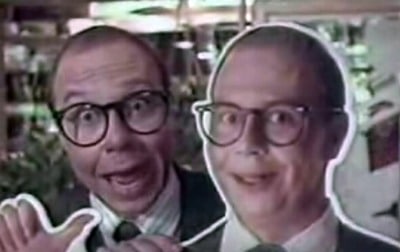
Why It Missed the Mark
A few reasons: 1) No one cared who Herb was. 2) It was just too random: who is this guy and why are we trying to find him? No one really knew. 3) The contest rules were poorly communicated and resulted in a nasty PR situation.
Takeaways
If you’re going to have a brand mascot, try to have it make some sense. Don’t try to get people to care about your mascot or promotion without giving them a reason to first. (Oh, and be very, very clear about contest age restrictions.)
6. Pepsi Runs a Disastrous Lottery
Here’s What Happened
Yes, Pepsi again. In 1993 in the Philippines, Pepsi ran a lottery, in which—if you found the bottle cap with the right code on it—you could win $40,000.
The problem? Pepsi announced the wrong code. So instead of 1 winning bottle cap, there were suddenly 800,000 winning bottle caps. Pepsi refused to pay; outrage ensued.
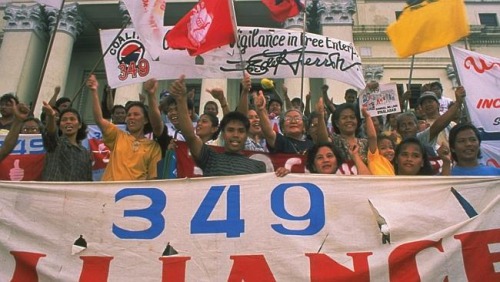
Why It Missed the Mark
Do we even have to say it? False hope and botched lotteries are not good ways to do business.
Takeaways
If you’re going to run a lottery or contest or anything promising a big, life-changing reward, please make sure you’re running it carefully and 100% free of mistakes.
7. Fiat Moonlights as a Stalker
Here’s What Happened
In 1992, 50,000 Spanish women got a letter from a stalker saying things like, “We met again on the street yesterday and I noticed how you glanced interestedly in my direction.” They then invited the female recipient to embark with them on an adventure.Except the letters weren’t from a stalker. They were from Fiat, the car company.
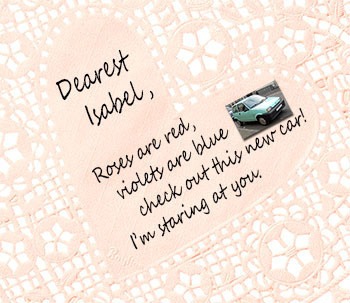
Why It Missed the Mark
Though the ad might have been cute and clever if it were clear that it was an ad, it wasn’t clear that it was an ad. If Fiat would’ve put their logo on it and a disclaimer message to the tune of “you are not actually being stalked,” things might not have gone so poorly.
Takeaways
Be clear about your intentions in your advertising, and point it out plainly if you have to: “This is an advertisement. We are not actually stalking you.”
8. Starbucks Prints a 9/11 Ad
Here’s What Happened
In 2002, Starbucks released this ad:
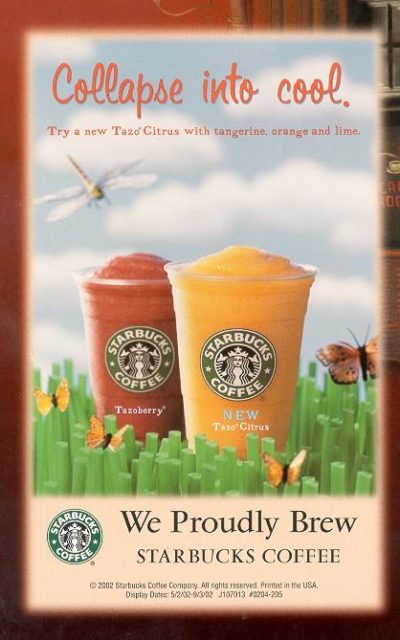
Which, because of the 1) two cups, 2) strangely square-tipped blades of grass that resembled buildings, 3) zooming dragonfly, and 4) ad copy “Collapse Into Cool”, made people think Starbucks was…poking fun? (or just really that ignorant?) at the 9/11 catastrophe.
Why It Missed the Mark
Obviously, it’s wildly offensive. Was it just a huge coincidence? I don’t even know—I still don’t understand the logic behind this one.
Takeaways
Stay alert for symbolism that might be—whether intentionally or unintentionally—depicted by the words or images in your ad.
9. Panasonic & Woody the Woodpecker
Here’s What Happened
In 1996, Panasonic’s Japan branch marketed a touchscreen PC with cartoon character Woody the Woodpecker as its brand mascot.
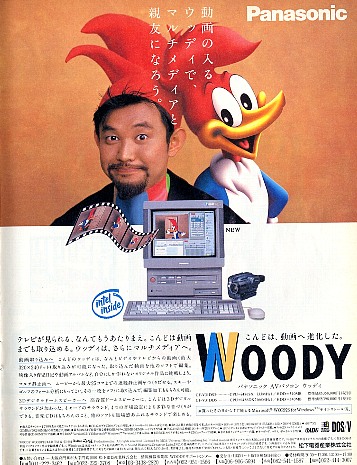
Oh, and the campaign’s slogan? “Touch Woody, the Internet Pecker.”
Why It Missed the Mark
It’s probably best not to use phallic references in your marketing. The fact that it was accidental made Panasonic look even worse.
Takeaways
Make sure your brand’s message translates well (and appropriately) when you’re doing business overseas.
10. Turner Broadcasting Promotes with a Bang
Here’s What Happened
In early 2007, Turner Broadcasting had small blinking LED devices depicting a cartoon character installed in 10 major cities around the US. The intention was to use guerrilla marketing to create hype for the upcoming Aqua Teen Hunger Force movie.

Why It Missed the Mark
The nondescript ad freaked people out, causing Bostonites to call reports of what looked like bombs. Panic ensued. A bomb squad was called in. And people were not happy.
Takeaways
Don’t make ads that look like bombs.
But seriously, when you’re distributing or installing exhibits as part of guerrilla marketing, be extra careful. If there’s any possibility it’ll make passersby feel unsafe, scrap it.
11. Hyundai Belittles Suicide Victims
Here’s What Happened
In 2013, Hyundai ran a commercial in the UK that essentially said, “Our cars are so safe you can’t even commit suicide in them.”
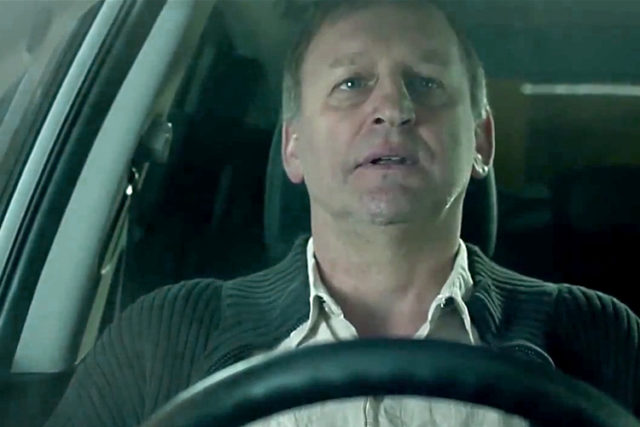
The point was that the sedan doesn’t produce harmful emissions like other cars do, and unfortunately the campaign’s creators thought a good way to get that point across was to show a man’s unsuccessful suicide.
Why It Missed the Mark
Just like Pepsi trivialized social justice movements, Hyundai trivializes the heartbreak and devastation of suicide. You can’t be a person who’s suffered from suicidal thoughts—or a person who has lost someone due to suicide—and enjoy Hyundai’s ad, and that’s why they missed the mark.
Takeaways
Don’t try to force your ad message into social issues if they don’t fit. Pro tip: they probably don’t fit. Don’t let your desire to be quirky or clever undermine serious social issues.
12. LifeLock’s CEO Dares You to Steal His Identity
Here’s What Happened
In 2007, LifeLock CEO Todd Davis posted his social security number on a billboard and dared the world to steal his identity.
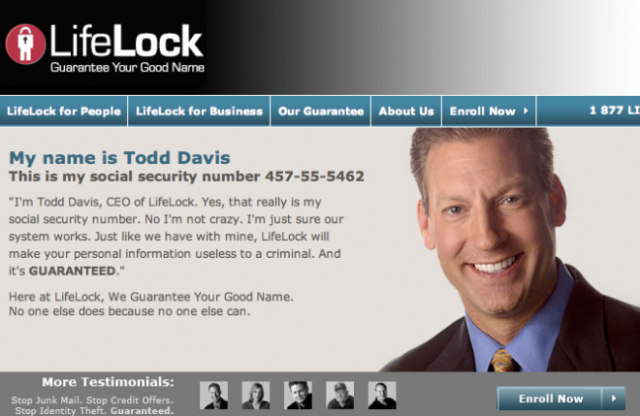
Plot twist: that’s not actually a plot twist because everyone saw it coming: a lot of people stole his identity.
Why It Missed the Mark
It’s not just because this ended up being a huge headache for Todd Davis on a personal level. To make matters worse, the fact that people actually called Davis out on his dare and proved LifeLock’s security breachable made the whole campaign painfully embarrassing for LifeLock and everyone involved.
Takeaways
Don’t dare your audience to do something you don’t actually want them to do. People will call your bluff, so be prepared to handle the consequences.
Our Biggest Takeaway
What do all these takeaways have in common? Prudence. Thoughtfulness. Social consciousness.
If you’re unsure about whether or not an ad you’re about to put out there is offensive, ask. Ask a stranger on the street if you have to. Ask a neighbor. Ask a friend. Will my ad offend someone? What kind of mental associations will this conjure for my brand?
If the answer’s less than stellar, scrap it.
Does your team need a powerful project management tool that the whole team can use? Workzone may be just the ticket…

